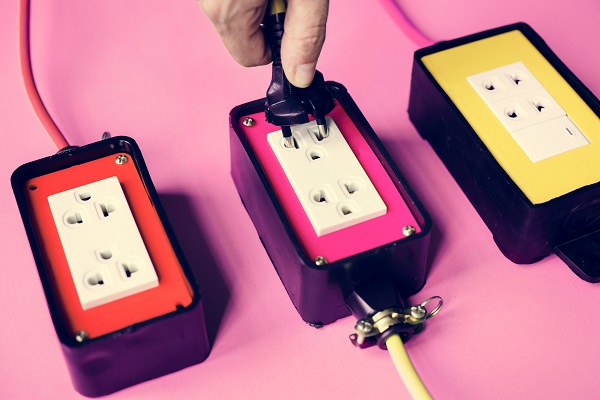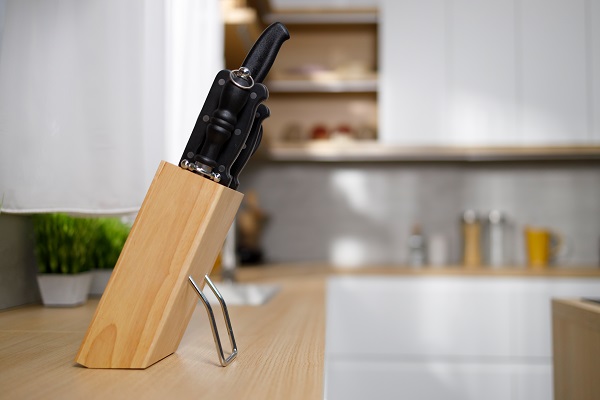Every home, a sanctuary of comfort and safety, harbors items that, under certain circumstances, can pose significant risks. Often, these dangers lurk unnoticed, blending seamlessly into daily routines. This article sheds light on the most dangerous items in your home, emphasizing the need for awareness and preventive measures. By understanding these risks and adopting safer practices, you can significantly reduce the likelihood of accidents and injuries, ensuring your abode remains a haven of safety and well-being.
Contents
- 1 Cleaning Products: Hidden Chemical Hazards
- 2 Small Batteries: A Swallowing Risk
- 3 Slippery Rugs And Carpets: The Fall Hazard
- 4 Overloaded Electrical Outlets: Fire Risks
- 5 Prescription Medications: Risk Of Misuse
- 6 Sharp Kitchen Tools: Cuts And Lacerations
- 7 Unsecured Heavy Furniture: Tipping Dangers
- 8 Indoor Air Pollutants: Invisible Health Threats
- 9 Take Steps To A Safer Home!
Cleaning Products: Hidden Chemical Hazards

Household cleaning products, while essential for maintaining hygiene, can be a source of hazardous chemicals. Many of these products contain substances like ammonia, bleach, and other corrosive or toxic ingredients that can pose serious health risks if handled incorrectly. The danger escalates when these products are stored within easy reach of children or pets or when they are used without proper ventilation. Accidental ingestion, skin contact, or inhalation of fumes can lead to severe health complications, emphasizing the need for cautious handling and storage.
The key to mitigating these risks lies in informed usage and storage. It’s crucial to read and follow the instructions on product labels and to store these items in a secure, preferably locked, location. Additionally, exploring natural alternatives, such as vinegar and baking soda, for everyday cleaning tasks can significantly reduce the presence of harmful chemicals in the home. Educating family members, especially children, about the dangers of these substances is equally important in preventing accidental exposures.
Small Batteries: A Swallowing Risk

Small batteries, particularly button batteries, are a common yet overlooked hazard in many homes. Found in numerous household items like remote controls, toys, and watches, these batteries can be easily ingested by young children, leading to serious health emergencies. Once swallowed, these batteries can cause severe internal burns and even life-threatening injuries within a short span of time. The risk is compounded by the fact that symptoms of battery ingestion, such as coughing and discomfort, can be easily mistaken for less severe conditions.
To prevent such incidents, it’s vital to keep devices with small batteries out of children’s reach and to regularly check these items to ensure the batteries are securely compartmentalized. In case a child swallows a battery, immediate medical attention is imperative. As a precaution, parents and caregivers should familiarize themselves with the symptoms of battery ingestion and have emergency contact numbers readily available. Regularly checking and safely disposing of old or spare batteries can also help minimize these risks.
Slippery Rugs And Carpets: The Fall Hazard

Rugs and carpets, common in most homes, can unexpectedly become a slip-and-fall hazard. These incidents are not trivial; they can lead to serious injuries, particularly in elderly individuals or those with mobility issues. Slippery surfaces are often caused by rugs without adequate grip or carpets not properly secured to the floor. Such accidents can result in fractures, head injuries, and long-term mobility problems, highlighting the need for preventive measures in home design and maintenance.
Ensuring rugs and carpets are equipped with non-slip pads is a simple yet effective way to reduce the risk of falls. Regularly inspecting these items for wear and tear and replacing or repairing them as needed can also prevent accidents. In high-traffic areas, opting for carpets with shorter piles and securing the edges firmly to the floor can provide additional safety. Educating household members about the risks, especially in homes with young children or elderly residents, is crucial in fostering a safer living environment.
Overloaded Electrical Outlets: Fire Risks

Electrical outlets, when overloaded, can become a significant fire hazard in the home. The convenience of modern appliances and gadgets often leads to plugging too many devices into a single outlet, straining the electrical system. This overuse can cause overheating, sparking, and, in severe cases, electrical fires. Signs of an overloaded electrical system include frequently tripped circuit breakers, flickering lights, and warm or discolored wall plates, all of which warrant immediate attention.
To prevent such hazards, it’s essential to understand the capacity of your home’s electrical system and to use outlets judiciously. Avoid using multiple high-wattage appliances simultaneously on the same circuit, and consider unplugging devices when not in use. Employing surge protectors and power strips can offer additional safety, but they should not be daisy-chained or overloaded. Regular inspections by a qualified electrician can also help identify and rectify potential risks, ensuring the electrical system remains safe and functional.
Prescription Medications: Risk Of Misuse

Prescription medications, essential for health management, can pose significant risks if mishandled. In homes, especially those with children or teenagers, the improper storage of these drugs can lead to accidental ingestion or misuse. Medications left in easily accessible places or discarded carelessly can be tempting for curious children or those unaware of their potential danger. The consequences of accidental poisoning or misuse range from mild adverse reactions to life-threatening emergencies, highlighting the critical need for secure medication management.
To mitigate these risks, it’s essential to store all medications, including over-the-counter drugs, in a secure, preferably locked location. Regularly disposing of expired or unused medications through safe methods, like drug take-back programs, is also crucial. Educating family members about the dangers of medication misuse and adhering to prescribed dosages can further enhance household safety. In homes with young children, using child-resistant packaging and keeping medications out of sight and reach is particularly important.
Sharp Kitchen Tools: Cuts And Lacerations

Sharp kitchen tools, while essential for culinary tasks, can be a source of serious injury in the home. Knives, graters, and peelers, among others, are common in most kitchens but can cause cuts and lacerations if not used or stored properly. These injuries can range from minor cuts to severe wounds requiring medical attention. The risk increases in households with young children or individuals unfamiliar with safe kitchen practices. Ensuring the safe use and storage of these tools is crucial to prevent accidents.
Safe handling of sharp kitchen tools involves proper usage techniques and awareness. Keeping knives sharp, as paradoxical as it may seem, actually reduces the risk of injury since less force is required for cutting, reducing the chance of slippage. Storing these tools in a knife block or secure drawer, away from the reach of children, is also important. Additionally, investing in safety equipment like cut-resistant gloves and providing basic kitchen safety training for all household members can significantly reduce the likelihood of injuries.
Unsecured Heavy Furniture: Tipping Dangers

Heavy furniture, such as bookcases, dressers, and television stands, can pose a serious risk of tipping over, particularly in homes with active children. These incidents can lead to severe injuries or even fatalities, especially if the furniture falls onto a young child. The stability of furniture is often overestimated, and the danger is not always apparent until an accident occurs. This risk is heightened when furniture is placed on uneven surfaces or when drawers and shelves are overloaded, making them top-heavy.
To prevent furniture tip-over accidents, securing heavy items to the wall is a key safety measure. Anti-tip kits, which are often included with new furniture or can be purchased separately, are effective in anchoring furniture to walls. It’s also important to educate children about the dangers of climbing on furniture and to supervise their play in areas with heavy items. Regularly checking and rearranging furniture to ensure stability, especially in children’s rooms and play areas, can further enhance safety in the home.
Indoor Air Pollutants: Invisible Health Threats

Indoor air quality is an often overlooked aspect of home safety, yet poor air quality can pose significant health risks. Common sources of indoor air pollution include mold, dust mites, pet dander, tobacco smoke, and emissions from household cleaning products. Prolonged exposure to these pollutants can lead to respiratory problems, allergies, and other health issues, particularly in individuals with pre-existing health conditions or sensitivities. Ensuring good indoor air quality is essential for maintaining a healthy living environment.
Improving indoor air quality can be achieved through several practical steps. Regular cleaning and vacuuming can reduce the presence of dust mites and pet dander while using dehumidifiers can help prevent mold growth. Opting for natural cleaning products and ensuring adequate ventilation when using chemicals can also reduce harmful emissions. Additionally, investing in air purifiers with HEPA filters can significantly improve air quality, especially in rooms where pollutants are most prevalent. Regular maintenance of heating, ventilation, and air conditioning systems is also crucial in maintaining clean indoor air.
Take Steps To A Safer Home!
Transforming your home into a safer environment requires awareness and proactive measures. By understanding the risks posed by everyday items and implementing the recommended safety practices, you can significantly reduce the likelihood of accidents and injuries. Remember, a small effort in securing your home can lead to a substantial increase in the well-being and safety of your family. Start today by assessing your home for these hazards and take the necessary steps to create a safer living space.


